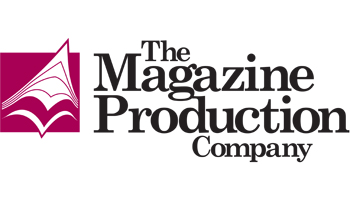
Q: What are the telltale signs of a poorly designed magazine?
A:
Inconsistency. Copy laid without thought and consideration.Poor use of fonts and alignment can make reading content challenging, especially for those readers who may be visually challenged. Along with using low-resolution / uncorrected images, these are just a few of the things we see when the primary aim is to publish a magazine at the lowest possible cost, often involving people with little or no experience.
The results can adversely impact how the title is perceived by its audience.
Errors can creep in at any point in the production process and inexperienced designers are less likely to spot them.
For instance, if the product is being printed, all assets across all pages must remain compliant for commercial printing. The last thing any publisher wishes to see is an error generated with the artwork at the plating stage because of an inherent flaw generated by the person who prepared the page or within artwork supplied by an advertiser.
Q: When choosing paper for a magazine, what advice do you give your clients?
A:
Clients generally fall into two categories; quality or budget. Either way, we would recommend FSC-certified paper stocks from sustainable sources. If the publication is to be mailed, we primarily look at unit weights and marry with mailing costs to determine the best choice of paper available.In addition to the actual printing of the magazine, fulfilment and mailing should also be taken into account when considering paper. There have been a number of occasions when clients have been surprised by the mailing costs after the job has been printed because they chose paper without taking weight into account.
For our smaller independent publishers with small runs, we would suggest working just under a B5 format so it qualifies for small-sized letter pricing, which would save at least 40p per unit using second-class post. Also, this size is great for digital applications too.
Q: For print publishers thinking of launching a digital edition, what do they need to consider?
A:
Where do you want me to start? First off – reader behaviour. The digital environment requires a different approach to print. Neither are the same, but both can complement each other very well.Digital editions (or derivatives of the publisher’s print issues) should carry fewer pages and be optimised for online viewing to match the shorter attention span. As a value-added product, digital issues are a must for any publisher; it makes for a great marketing tool to attract readers from untapped markets.
Publishers should include content that isn’t time-sensitive where pages can be shared over time across social media. Publish the magazine online, something which can be easily done by simply adding HTML code to your website.
You can also offer back issues as digital issues. This is a great tool to access previously published content. One client offered issues over three years old for free as a value-added service for its readers and advertisers.
Q: What role, if any, do you see AI having in the magazine production process?
A:
To focus on one recent feature, we’ve been using a beta version of Photoshop over the past few months. It now offers AI-related tools that can recognise people and objects, resulting in faster ways to accurately cut out images, enabling us to make better use of page space and give pages more impact. Before, cutting out / clipping photos was, in most cases, a very time-consuming process. That is why continual investment in software is so important.In addition to correcting / enhancing images, AI can also be used to generate fictitious images to accompany a writer’s article.
Just recently, I was working on an article where the writer referred to ‘parking like a princess’. And, yes, we published a photo of a bemused-looking princess wearing a pink dress and a tiara sitting in the driver’s seat of a car. You try and find that particular image in an image library! It’s just one tool in our armoury that can save time instead of asking the writer to add more words to fill space.
Q: For publishers that outsource their page makeup and design, what advice do you give them that will help the relationship fire on all cylinders?
A:
Planning. It is as simple as that. Supplying all content by a certain anticipated time is an excellent way to save money, as it enables us to be entirely focused on turning the publication around in a condensed period of time.Q: What’s in the pipeline from The Magazine Production Company?
A:
We are very much proactive in being reactive to client needs. Software features and processes have evolved, resulting in faster turnaround times when producing publications. While our focus has always been to deliver a functional service and delivery within a reasonable timeframe and cost, under the current climate, we’re focusing on our existing client base as we all try to negotiate these challenging times.
About us…
Here at The Magazine Production Company, our services can be delivered in a way that suits you, your project and your budget. Our clients are rarely the same in how they approach their needs. Some need only a certain skill set to bolster their own team, whilst some clients need the whole suite of services. If you’re looking for a production company to partner with in a way that suits you then we are exactly what you are looking for. Our flexibility and experience allow us to fit seamlessly into your project and your team. And if you need to discuss your options with us, we are always available for advice or a free consultation and quote.
01273 911730










